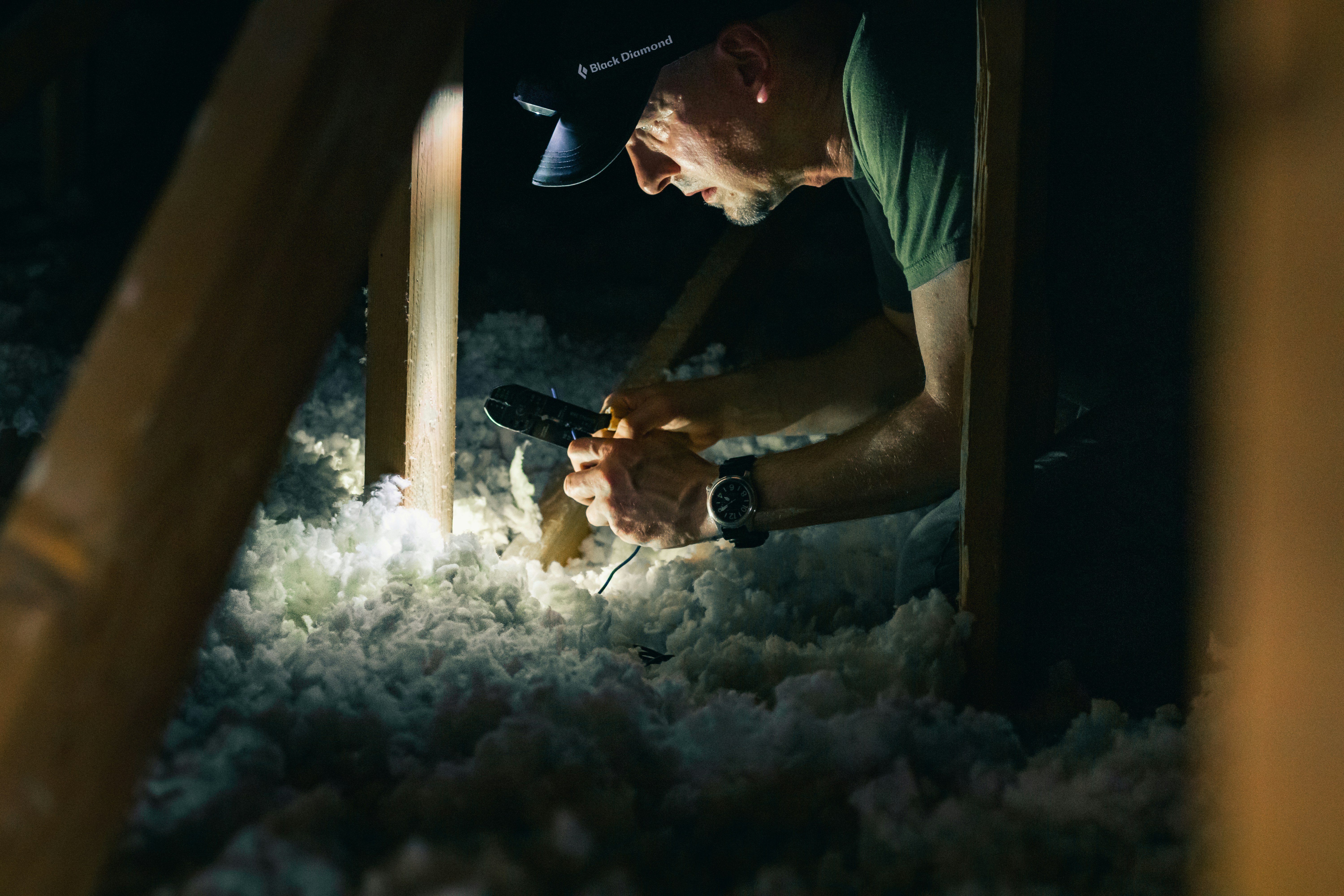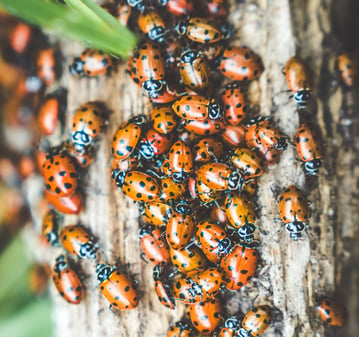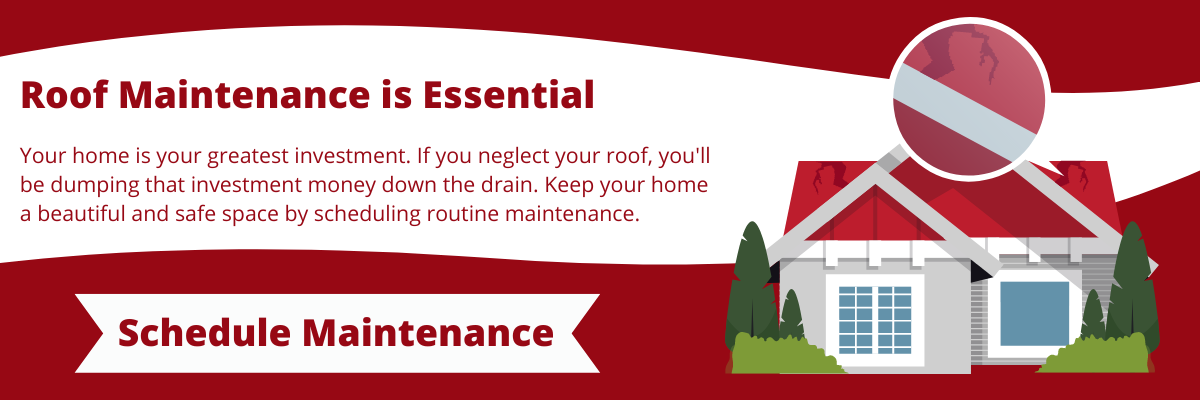
Bugs are one of nature's wonders- from big to small to black to blue; they're undoubtedly interesting, if nothing else. There are also quintillions of them in the world! What does that mean? Well, they're everywhere- the nooks, crannies, and everything in between. They're even in your roofing system. But since you landed here, we reckon you already know that!
Insect bombs have been around for decades, and it's likely you've at least heard of someone using one at least once in your lifetime. Just because they're commonly used and widespread doesn't mean they're the best course of action, however. Creepy crawlies are no fun, but let's ensure you choose the best course of action for your home to remove them.
With 30 years in the roofing game, RoofCrafters has seen it all, and we know that insects are a common issue in homes. Roofs are typically an ideal environment for them- cool, dark, and dry. While the occasional spider is fine, if you have an infestation, you're likely looking for ways to fix the problem. Here, we'll discuss whether bug bombs are the way to go and provide you with some tips and alternative solutions. So don't go buy those bombs just yet!
Let's Talk About Insect Bombs
To give you an accurate scope of what these pesticides do, how they operate, and if they're safe, we'll get into the specifics.
What Are Insect Bombs?
Bug bombs, also known as insect foggers, are pest control products designed to treat enclosed spaces for a variety of insects. These devices typically come in pressurized cans or containers and release a pesticide mist when activated. The idea is to create a fog that fills the treated area, reaching crevices and hiding spots where insects may dwell.
When you activate a bug bomb, it releases a pesticide mist containing insecticides into the air. The mist settles on surfaces and permeates the treated area, reaching places where insects hide, live, or breed. This method is particularly useful for controlling flying insects, crawling pests, and other unwanted visitors in spaces like homes, apartments, or offices.

However, the use of bug bombs raises several safety and efficacy considerations. Firstly, proper preparation is essential. Residents are usually required to vacate the treated area, remove or cover exposed food, and turn off ignition sources due to the flammable nature of some bug bomb formulations. Additionally, bug bombs may not reach hidden areas, and their effectiveness can vary depending on factors like insect species and the extent of the infestation.
Despite their convenience, bug bombs have limitations. They may not address the root cause of an infestation, and pests that are not directly exposed to the mist may survive. There are also concerns about the potential health risks associated with inhaling or coming into contact with the pesticide residues left after the treatment.
Can You Insect Bomb Your Roof?
Introducing an insect bomb into your roof may not be the most effective or recommended solution for dealing with pests. Insect bombs, also known as foggers, are typically designed for enclosed indoor spaces and can pose safety risks if not used properly. Releasing insecticides into your roof space may also not effectively target pests hiding within the structure, and it could lead to other unintended consequences.

When dealing with pests in your roof, it's crucial to identify the specific type of infestation and adopt a targeted approach. Common pests, such as rodents or insects, can find their way into roofs through openings or damaged areas. Prevention and exclusion methods, like sealing entry points and addressing potential attractants, are often more effective in the long run. But we'll get into that more below.
Alternative Solutions to Rid Your Roof of Insects
If you're dealing with insects in your roof and prefer alternatives to bug bombing (which is suggested in some cases), there are several methods you can consider to address the issue. Here are some approaches to help get rid of insects without resorting to insect bombs:
- Identify the Insect Species:
- Before implementing any control measures, identify the specific insect species. Different pests may require different strategies for effective elimination.
- Seal Entry Points:
- Inspect your roof for potential entry points and seal any gaps, cracks, or openings. This helps prevent insects from entering your home in the first place.
- Improve Ventilation:
- Ensure proper ventilation in your attic or roof space. Good airflow can make the environment less favorable for insects and help reduce moisture, which attracts pests.
- Remove Standing Water:
- Eliminate any sources of standing water on your roof or in gutters, as stagnant water can attract insects. Fix leaks promptly and ensure proper drainage.
- Use Natural Repellents:
- Employ natural repellents, such as essential oils like citronella, peppermint, or neem oil. These can be applied to areas where insects are present or used as deterrents.
- Beneficial Insects:
- Introduce beneficial insects that prey on common pests. For example, ladybugs are natural predators of aphids and other small insects. You can buy them online!

- Biological Controls:
- Explore biological control methods, such as introducing nematodes or microbial insecticides. These options target specific pests without harming beneficial organisms.
- Diatomaceous Earth:
- Sprinkle food-grade diatomaceous earth in areas where insects are present. This natural substance can be effective against various pests while being safe for humans and pets. It's a staple in gardens all over the world!
- Regular Cleaning:
- Keep your roof and surrounding areas clean by removing debris, leaves, and organic matter. Regular cleaning reduces hiding spots for insects.
- Consult with Pest Control Professionals:
- If the infestation persists or if you're uncertain about the best approach, consider consulting with pest control professionals. They can provide targeted solutions based on the specific pest problem you're facing.
Remember that prevention is key, so maintaining a clean and well-sealed roof space can go a long way in deterring insects. Implementing these methods can help create an inhospitable environment for pests while minimizing the need for chemical interventions!
Should You Use Insect Bombs in Your Roof?
The decision to use insect bombs in your roof depends on various factors, including the severity of the infestation, the type of insects involved, and your preference for control methods. While insect bombs, or foggers, can be effective in certain situations, they may not be the best or most suitable option for every circumstance!
For those seeking alternative methods, there are several non-chemical approaches to consider. Identifying the specific insect species, improving ventilation, sealing entry points, and implementing natural repellents are viable options. The importance of regular maintenance, cleanliness, and addressing potential entry points cannot be overstated in preventing future infestations.
At RoofCrafters, we prioritize the well-being of your home and understand the challenges associated with insect infestations! Whether you choose insect bombs or opt for alternative methods, maintaining a proactive and informed approach to pest control is key in ensuring a safe and comfortable living environment for you and your family.
My name is Kevin Mills, and I am the lead estimator for RoofCrafters’ Tampa division. I’m originally from Michigan, and I enjoy hunting, fishing, and spending any free time outdoors. What I’m most passionate about, though, is helping business owners and homeowners alike achieve their roofing goals, all while providing a seamless customer journey.




